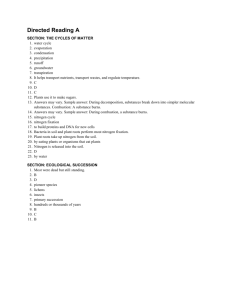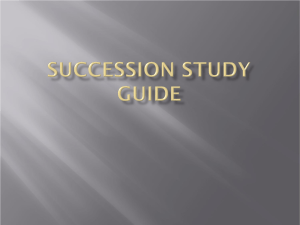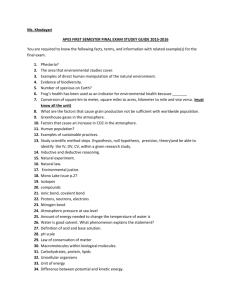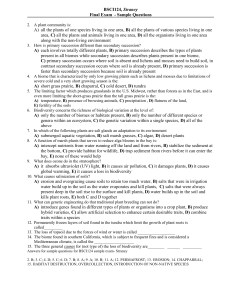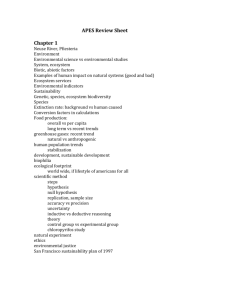Vocabulary: Biology Unit 10: Ecology Part III Date: 5th 6 weeks
advertisement
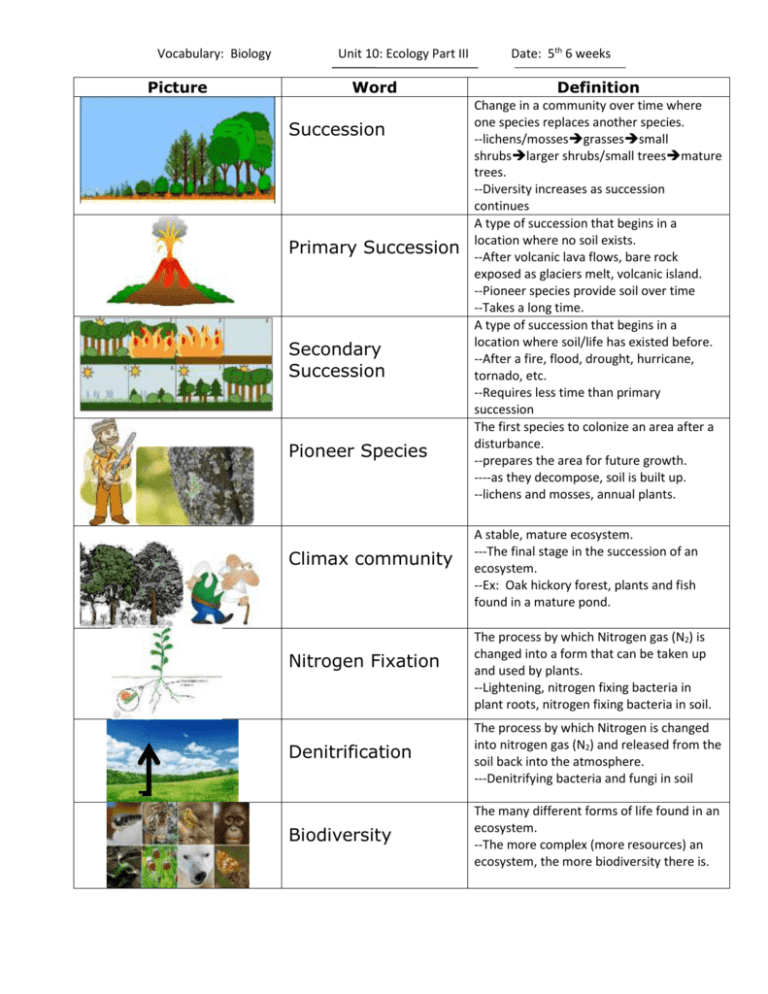
Vocabulary: Biology Picture Unit 10: Ecology Part III Word Succession Primary Succession Secondary Succession Pioneer Species Climax community Nitrogen Fixation Date: 5th 6 weeks Definition Change in a community over time where one species replaces another species. --lichens/mossesgrassessmall shrubslarger shrubs/small treesmature trees. --Diversity increases as succession continues A type of succession that begins in a location where no soil exists. --After volcanic lava flows, bare rock exposed as glaciers melt, volcanic island. --Pioneer species provide soil over time --Takes a long time. A type of succession that begins in a location where soil/life has existed before. --After a fire, flood, drought, hurricane, tornado, etc. --Requires less time than primary succession The first species to colonize an area after a disturbance. --prepares the area for future growth. ----as they decompose, soil is built up. --lichens and mosses, annual plants. A stable, mature ecosystem. ---The final stage in the succession of an ecosystem. --Ex: Oak hickory forest, plants and fish found in a mature pond. The process by which Nitrogen gas (N2) is changed into a form that can be taken up and used by plants. --Lightening, nitrogen fixing bacteria in plant roots, nitrogen fixing bacteria in soil. Denitrification The process by which Nitrogen is changed into nitrogen gas (N2) and released from the soil back into the atmosphere. ---Denitrifying bacteria and fungi in soil Biodiversity The many different forms of life found in an ecosystem. --The more complex (more resources) an ecosystem, the more biodiversity there is. Picture Word Limiting factors Density independent factor Density dependent factor Carrying capacity Definition Any factor that limits the growth or development of an organism or population. --food, water, shelter, space, amount of sunlight, predation, temperature, etc. Limiting factors that are not affected by population size. --Fires, storms/hurricanes, flooding, tornados, habitat destruction, drought. --Large and small populations are equally affected. Limiting factors in an ecosystem that are affected by population size. --Competition, predation, parasitism, disease --Larger populations are more affected than smaller populations. The maximum population size that an ecosystem can support. --Available resources (food, water, shelter ) determine the carrying capacity of a species.

